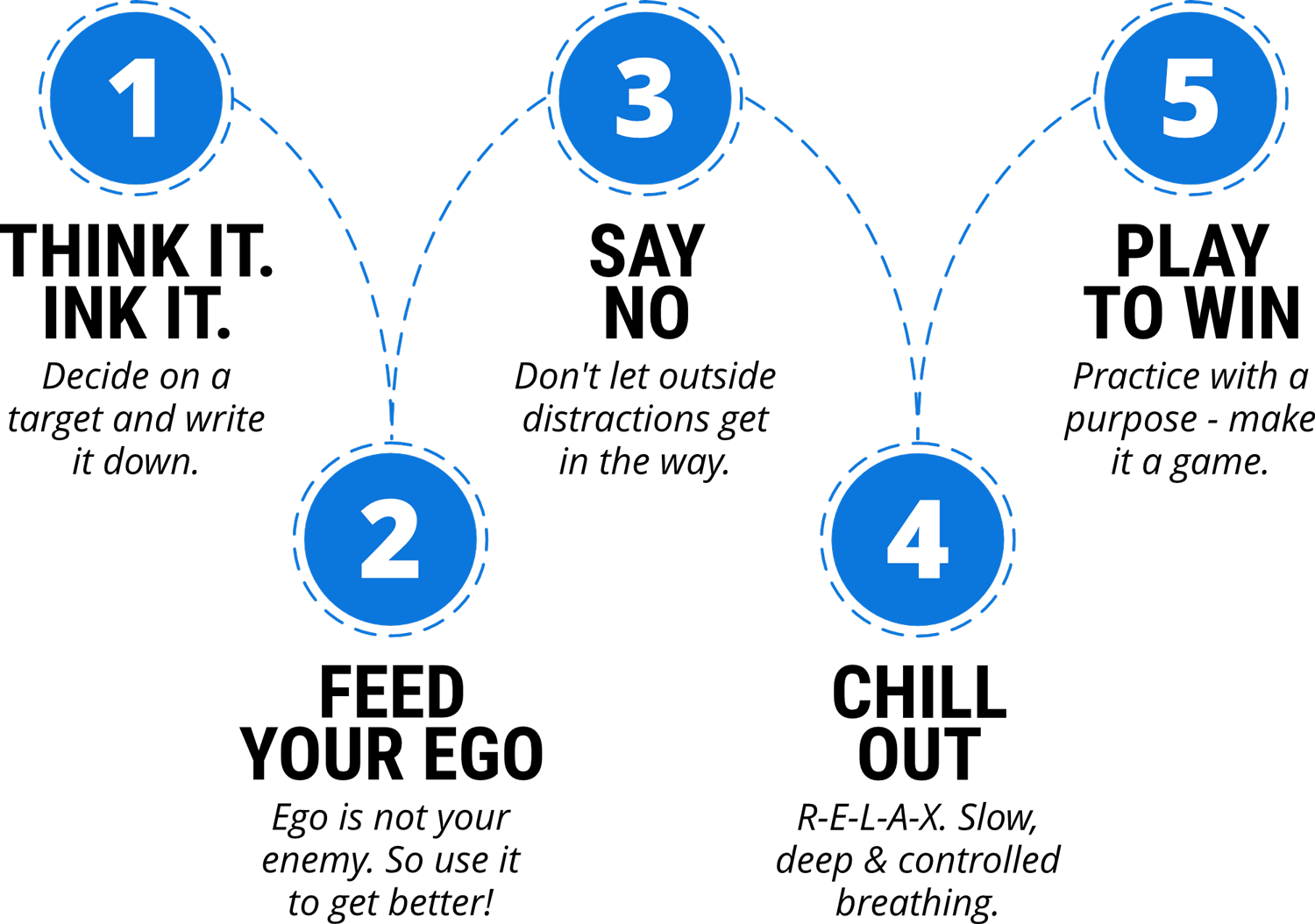

Qualities like playing “in the zone” and being “laser focused” are hallmarks of great drummers. Without the ability to sustain deep concentration, we are at the mercy of our distracted brain. We can succumb to mental mistakes and inadequate performances when we pay attention to the wrong things at the wrong time. In fact, one of our greatest challenge as drummers is fighting off distractions when the material we’re working on is greater than our skill set. Difficult work makes us want to quit and move on to something else. Thanks to neuroscientific research, we now know what it takes to tame the mind and unleash the power of what psychologist Mihaly Csikszentmihalyi coined flow.
The flow state (aka: in the zone) is characterized as being an intrinsically motivated mental state that involves the complete absorption of what we do. Instead of feeling self-conscious and sensitive to our environment, we become almost superhuman in that we can experience a state of euphoric pleasure coupled with a heightened sense of invincibility and tranquility all at once. Being in flow is known to increase productivity, happiness, and self-esteem. It demands direct focus and is associated with better emotional regulation, which is crucial to resiliency and peak performance. While in flow, our brain is relaxed and primed for creative insights. Next time you start your practice routine be sure to include these helpful strategies.
Goal setting directs your efforts and primes your brain for higher achievement. It increases drive, effort, and your will to succeed. Making decisions starts and ends with the prefrontal cortex. Your prefrontal cortex is the defender of all things sensible, which includes facts, logic, and reasoning. When you think about who you are, who you want to become, and what you want to achieve, it’s your frontal cortex that’s doing the work. Goal setting is an essential element of any practice routine if you want to increase your ability to access flow. Unfortunately, it’s not that simple.
The act of “doing” is primarily influenced by your limbic system. Your limbic system is the emotional part of your brain. Your prefrontal cortex is no match for an unmotivated limbic system. Your brain is hard-wired to be lazy. In order to actually create the habit of goal setting, remind yourself that your dreams are worth it. You can increase your productivity and level of excellence with these two simple steps.
1) Think It. Decide on a clear target. This will ensure your brain is paying attention and it will start to release the right mix of neurotransmitters to get you started. When you commit to a goal, your prefrontal cortex will tell the other parts of your brain what to ignore and what to stay focused on.
2) Ink It. Write your target goals down. This gives your brain the visual cue it needs to stay on track, without having to concern itself with distractions. Active pursuit of a goal activates your brain’s reward circuitry, which in return releases neurotransmitters that support motivation, pleasure, and reward. When you get distracted, return to the cue, and let your brain do the rest.
Contrary to popular belief, your ego is not your enemy. You need a healthy ego to overcome the challenges of learning something new. It’s difficult to trigger a peak performance state if your inner critic is trying to sabotage your efforts. Inner criticism and self-encouragement involve key neurochemicals: dopamine, adrenaline, endorphins, oxytocin and serotonin. This potent neurochemical mix is heavily influenced by your perception of events and the way in which you respond to inner chatter. When you’re feeling overwhelmed with what you’re working on, feed your ego with this two-step process:
1) Identify negative, self-defeating thoughts. This is particularly important when you’re learning something new because that’s when your limbic system is on overdrive, trying to make you quit. Become acutely aware of what you are telling yourself.
2) Challenge the chatter. When your monkey mind kicks in and starts telling you how useless your efforts are, you’ve got to fight back. Your ego demands respect. Empowering self-talk is a choice. Choose your words wisely.

Distractions are flow killers. They take you out of your groove and destroy your chance of staying in the moment. Remember, accessing flow involves mastering the relationship between your prefrontal (rational) cortex and your limbic (emotional) system. A simple trick to increase your flow is to set your timer during practice. Giving yourself a specific amount of time to get things done will help demand your brain to stay focused. Turn off distractions and say no to those who want your attention before your time is up. This is about you, not them.
Performance anxiety inhibits peak performance and will keep you from optimizing flow. You can control your anxiety and physiological arousal with a simple breathing exercise. When you’re feeling anxious, try the 5-5-5 breathing method. Inhale for 5 seconds, hold for 5 seconds, and exhale for 5 seconds. This will lower your heart rate, calm your parasympathetic nervous system, and help you regain control. Slow, deep and regulated breathing helps to harmonize body and brain chemistry. Repeat when necessary. It’s simple, and it works.
Practice with purposeful intent by turning each lesson into a game of chasing rhythms. This will allow you to experience what futurist Jason Silva refers to as cognitive ecstasy- a neurostorm of intellectual pleasure. Chasing rhythms involves the purposeful process of trying to perfect each measure or groove. Breaking things down into small enough parts triggers your brain’s reward circuitry. It is the anticipation of perfecting each part that is triggering the release of dopamine, which is the molecule of desire. Changes in neurochemistry facilitate the awe-inspiring, pleasure-inducing feelings that will up your game. Allow yourself to indulge in the rhythmic flow of intense pleasure and harness the power to blow your own mind.
Ultimately, the only one that can stop you from winning is you.
Shut the door. Turn off social media. Focus. And get the job done!
Pamela Lynn-Seraphine M.S., CPT is a percussionist, educator and pioneering expert on the neuroscience of drumming for brain performance and health. She uses her website, www.NeuroDrumming.com as a digital soapbox to promote rhythmic brain training for healthy aging.


By signing up you’ll also receive our ongoing free lessons and special offers. Don’t worry, we value your privacy and you can unsubscribe at any time.
We use cookies for traffic data and advertising. Cookie Policy »